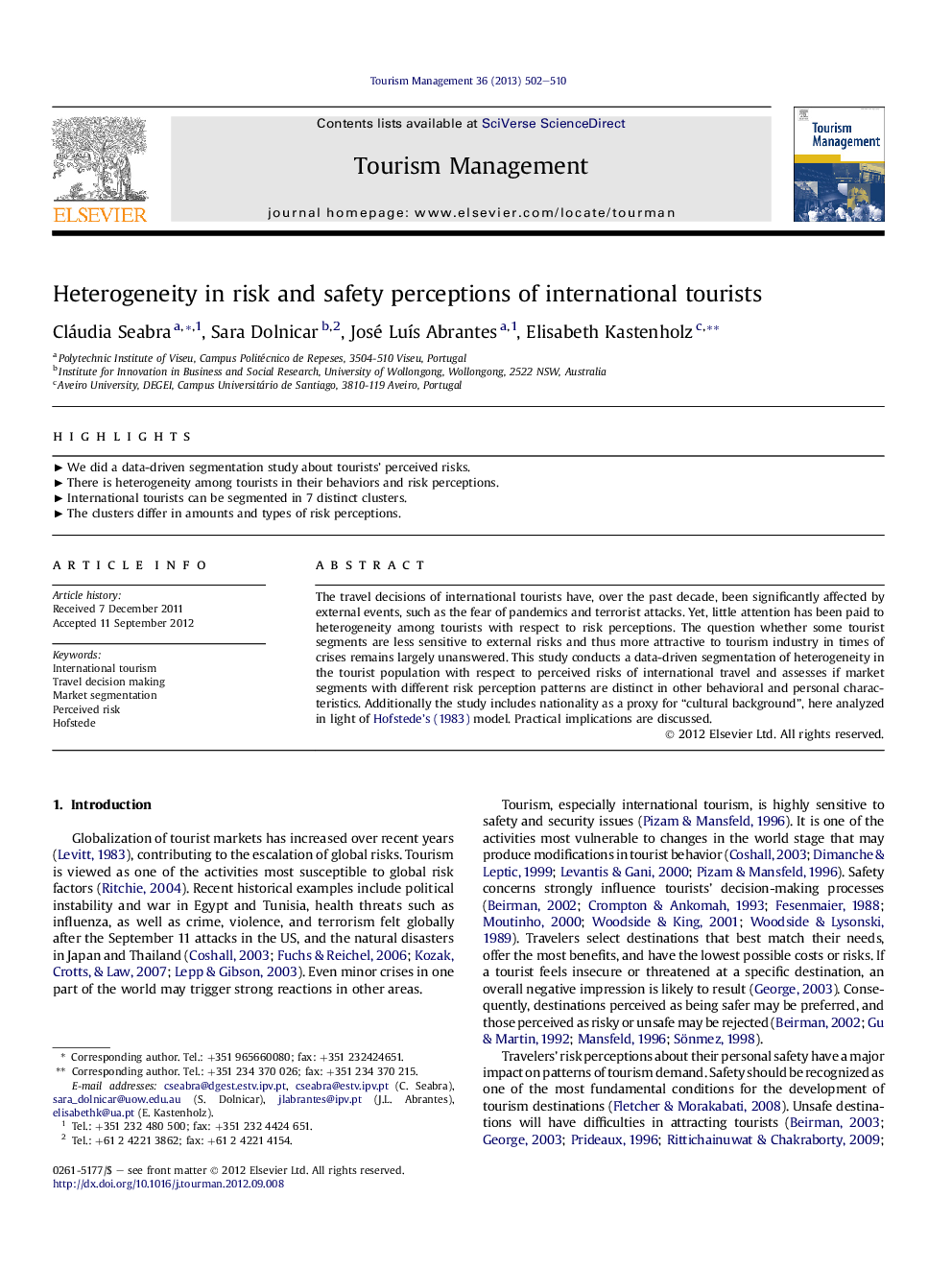| Article ID | Journal | Published Year | Pages | File Type |
|---|---|---|---|---|
| 1012307 | Tourism Management | 2013 | 9 Pages |
The travel decisions of international tourists have, over the past decade, been significantly affected by external events, such as the fear of pandemics and terrorist attacks. Yet, little attention has been paid to heterogeneity among tourists with respect to risk perceptions. The question whether some tourist segments are less sensitive to external risks and thus more attractive to tourism industry in times of crises remains largely unanswered. This study conducts a data-driven segmentation of heterogeneity in the tourist population with respect to perceived risks of international travel and assesses if market segments with different risk perception patterns are distinct in other behavioral and personal characteristics. Additionally the study includes nationality as a proxy for “cultural background”, here analyzed in light of Hofstede's (1983) model. Practical implications are discussed.
► We did a data-driven segmentation study about tourists' perceived risks. ► There is heterogeneity among tourists in their behaviors and risk perceptions. ► International tourists can be segmented in 7 distinct clusters. ► The clusters differ in amounts and types of risk perceptions.
